Led Zeppelin: Part 5, Led Zeppelin III
Led Zeppelin had achieved considerable fame and success with their first two albums. But they were exhausted by the continuous touring.
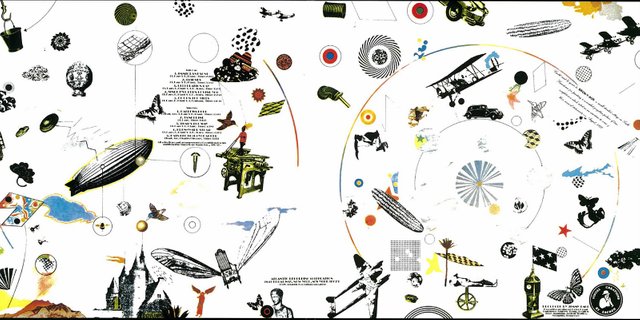
Image source
In Led Zeppelin: Part 3, Led Zeppelin II I wrote about how Led Zeppelin had put together the quintessential heavy metal album under difficult and chaotic circumstances.
Exhaustion
Being the “biggest band in the world” did not come easy. On the strength of the band's huge popularity, Led Zeppelin embarked on a long, exhausting tour of North America in the Spring of 1970. From 21 March to 18 April, they played 28 concerts—that's one every day, in a different city.
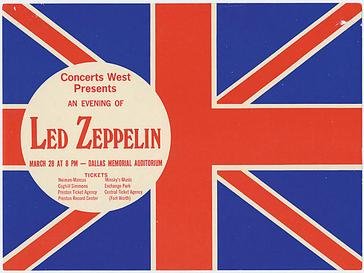
Notice, no supporting band. Image credit: Wiki commons
It wasn't an easy tour. The anti-Vietnam War feelings were running high and there was a great deal of tension between concertgoers and the police, often leading to violent confrontation. There was open hostility to the band in more conservative areas like Texas. The strain took its toll, with the last (29th) show cancelled when Plant's voice gave in. To top it all, Jimmy Page's 1960 Gibson Les Paul “Black Beauty” was stolen in an airport in Canada. (It was returned to him in 2016.)
But it was a sellout tour. It grossed over $1.2 million and broke attendance records at their Canadian concerts. Although they had planned on having a supporting act (Stone the Crows), this idea was abandoned. Zep was just too big a band, and they never had a supporting act again.
Back to the garden
Although the first recordings for Led Zeppelin III were made in November 1969, the bulk of the writing and recording was done after returning from the Spring Tour. They came back physically and mentally exhausted. Robert Plant wanted to take a break and head for the countryside, to the Cambrian Mountains in Wales. Plant remembered an 18th-century cottage from his youth called Bron-Yr-Aur. He invited Jimmy Page along and they took their women, instruments and supplies to “get back to the garden”. It was as basic as it gets; no electricity, water from a stream and outside toilet. “It was time to take stock, and not get lost in it all,” said Plant.
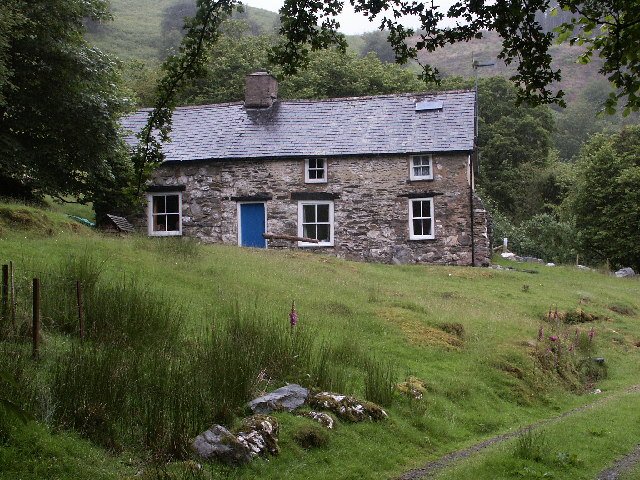
Bron-Yr-Aur Cottage near Machynlleth, Wales. Image source: Wiki commons
Although it wasn't conceived as a writing trip, many of the songs for Led Zeppelin III were written there. Other songs that originated there include Over the Hills and Far Away and The Crunge (from Houses of the Holy), The Rover, Bron-Yr-Aur and Down by the Seaside (from Physical Graffiti), and Poor Tom (from Coda).
Many ascribe the more acoustic and folkie sound of Led Zeppelin III to the Bron-Yr-Aur days. There is some truth in this. Page said the tranquillity of the place, away from the frenetic touring, had affected the overall tone of the songwriting and the dominant use of acoustic guitars. I guess not having electricity had something to do with it too. Page became more influenced by folk guitarists Davey Graham and Bert Jansch, and he started adopting some of their alternative guitar tunings.
Back to work
In May, the other two members of the group, drummer John Bonham and bassist/keyboardist John Paul Jones were summoned to Headley Grange, a mansion in East Hampshire to rehearse the songs. They all enjoyed the relaxed, rural environment, finding it ideal for developing the music. Page relinquished his primary songwriter role and allowed the other band members the space to contribute their creativity.
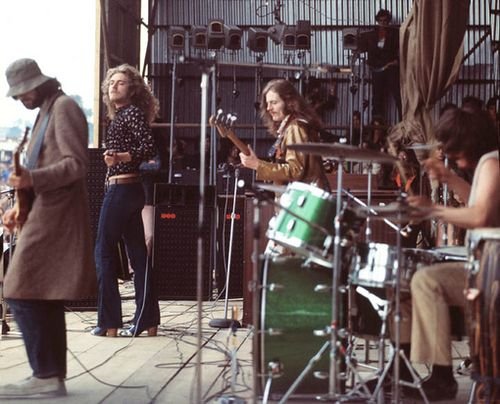
Led Zeppelin performing at Bath Festival, June 1970. Image source
The album was recorded between May and June 1970 at Headley Grange, using The Rolling Stones Mobile Studio. Some further recording was done in London and mixing was done in Memphis, Tennessee in August, during their sixth American concert tour. As usual, the album was produced by Jimmy Page.
The album was released on 5 October 1970. It had been the most anticipated album of the year with advance orders of close to a million in the US alone. But it had to wait until that date because of the intricate cover design.
Jimmy Page had asked Zacron, an old buddy of his from art school days, to design the cover. Page had come up with the idea of a volvelle, an inner sleeve wheel chart that can be turned presenting different combinations of images through holes in the outer sleeve. Zacron agreed to do this only if no text was on the front cover.
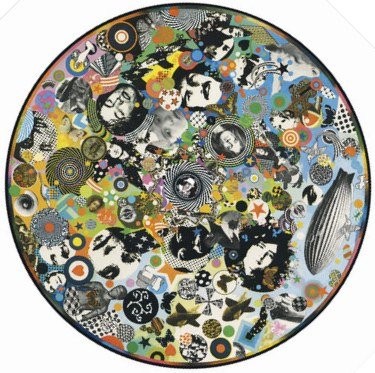
The volvelle, or inner card disc. Image source
On release, the album went straight to number one on the British Charts, and to number three on the US charts, going to number one a week later. However, after reaching Gold certification in October 1970, its sales fell off and didn't sell as many copies as the previous two albums.
The songs
Led Zeppelin III certainly was a change of direction for the band. It has a more acoustic feel and also an infusion of ideas from all the band members.
Immigrant Song, the album's thrilling opening number, cannot be accused of having an acoustic feel. It's Led Zeppelin at its most powerful and basic. I still remember the day hearing those heavy beats from John Bonham followed by Robert Plant's wordless howling. Absolutely thrilling. The “immigrants” of the title refer to ancient Viking conquerors of England (“the land of the ice and snow,” “the hammer of the gods”). It is Plant's showpiece. Here's a live performance of the song from 1972:
Friends is an acoustic track that uses C6 chord open tuning (C-A-C-G-C-E), and a string section arranged by Jones, written at Bron-Yr-Aur. It flows right into Celebration Day via the Moog synthesizer. This number is undoubtedly Led Zeppelin, well written and executed. But it's not particularly memorable on its own.
Since I've Been Loving You was one of the first songs written for the album, in late 1969. This is one of the great Zeppelin songs and one that was a performance staple for the rest of the band's career. It's an epic track, and their first successful original blues piece. All members of the band are outstanding, and the build-up of intensity toward Page's searing guitar solo is all-absorbing. Here's a live performance of the song from 1973:
Out on the Tiles, written by John Bonham falls into much the same category as Celebration Day. It has a complex rhythm structure, which is no surprise coming from a drummer. Good Zeppelin fare.
Side Two opens with Gallows Pole, an arrangement of the traditional folk song, The Maid Freed from the Gallows. Page plays a variety of acoustic and electric guitars and banjos. Jones's duties include playing the mandoline in addition to bass.
Tangerine was written by Page in 1968, while he was still with the Yardbirds. Page plays both acoustic and pedal guitars. It's a wonderful arrangement, full of emotion. It was done regularly as part of the group's acoustic set in the years to come.
That's the Way is a beautiful gem. This was the only song to be fully completed at Bron-Yr-Aur, supposedly “writing itself” when Plant spontaneously sang quietly along as Page strummed his acoustic 12-string. The disturbing events that Plant had witnessed during the American Spring Tour prompted him to write some reflective lyrics for the song. Page considered this partnership as a breakthrough in their development as a songwriting team.
Bron-Y-Aur Stomp was originally recorded as Jennings Farm Blues in late 1969, but then reworked as an acoustic number. The percussion you hear is Bonham playing spoons.
The album closes off with Hats Off to (Roy) Harper. It is based on the Bukka White blues song Shake 'Em On Down and named as a tribute to their friend and folk singer, Roy Harper.
The critics
The reviews weren't kind to the album. Some critics criticised the heavier tracks as crude and noisy, while others accused the band's acoustic material as imitating Crosby, Stills, Nash & Young. When reading these reviews I wonder if the critics actually listened to the album at all. Well, Page came to believe that journalists had little time to listen to the material and were simply looking for “the new Whole Lotta Love” instead of appreciating the material on its own merits.
Page was deeply offended by the criticism and refused any press interviews for 18 months after the release.
Led Zeppelin III marked a change in direction for the group. But the acoustic elements had always been there. The heavy tracks were played probably better. It was the stepping stone to their next album, the great Led Zeppelin IV.
Previous posts in this series:
Led Zeppelin: Part 1, The Making Of
Led Zeppelin: Part 2, The First Album
Led Zeppelin: Part 3, Led Zeppelin II
Led Zeppelin: Part 4, Jimmy Page
References:
Louder: How Led Zeppelin III Was Their Most Misunderstood Album
I Like Your Old Stuff: The Masterpiece That Is Led Zeppelin III
Wikipedia: Led Zeppelin III
BBC: Led Zeppelin Led Zeppelin III Review
Rolling Stone: Led Zeppelin III
Also posted on Weku, @tim-beck, 2019-02-20
Hello @tim-beck, thank you for sharing this creative work! We just stopped by to say that you've been upvoted by the @creativecrypto magazine. The Creative Crypto is all about art on the blockchain and learning from creatives like you. Looking forward to crossing paths again soon. Steem on!